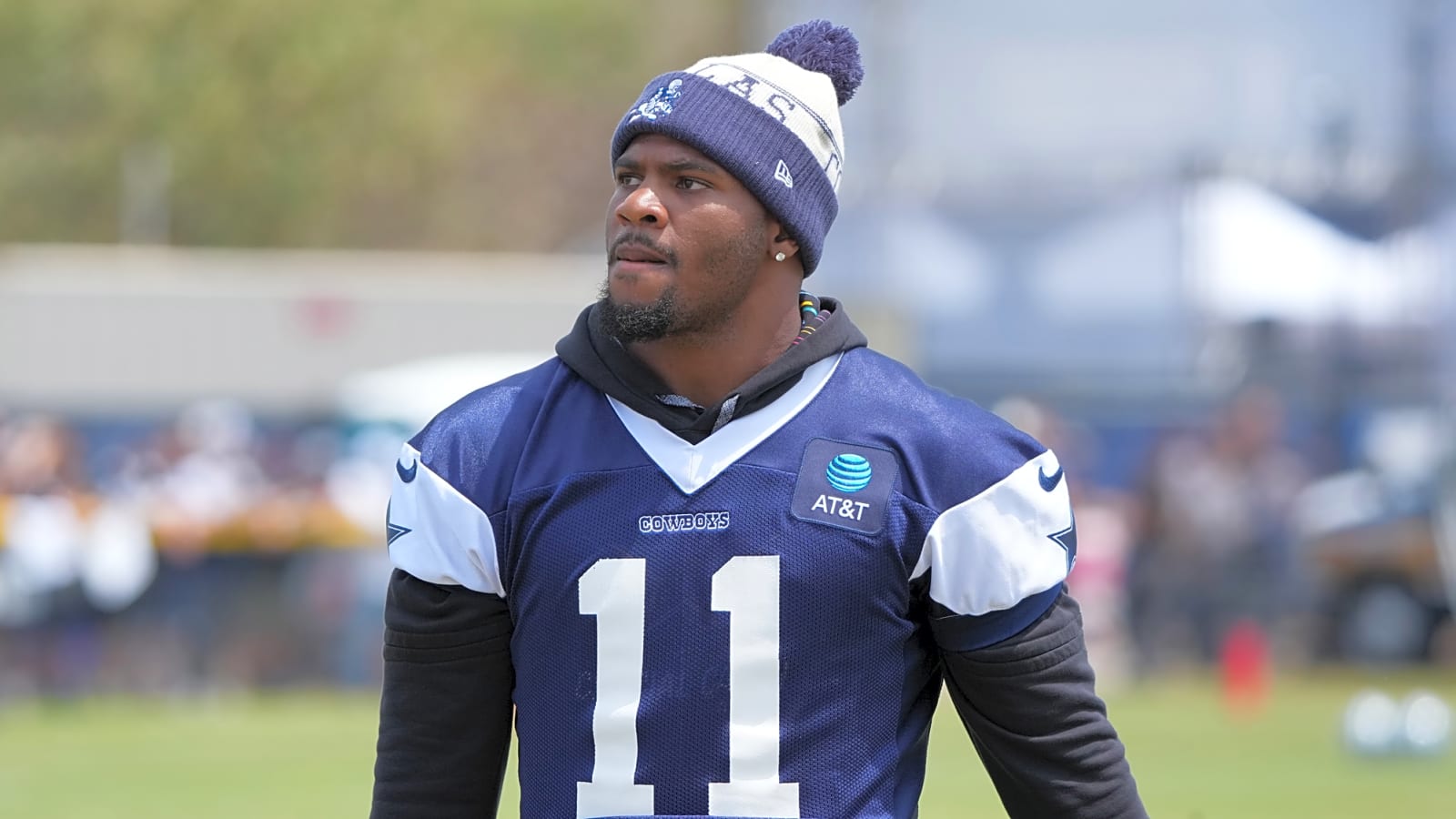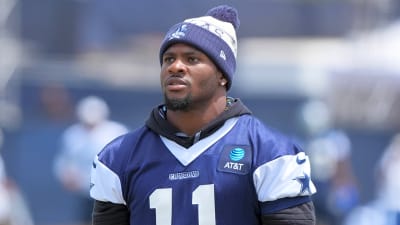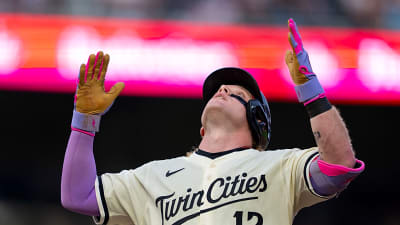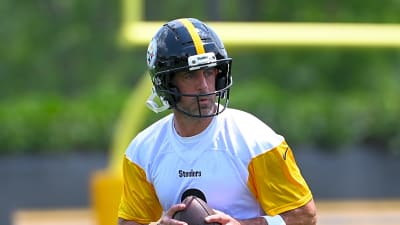
It wouldn’t be summer in Dallas without some contract drama, and DE Micah Parsons has obliged in recent days. Parsons has been eligible for a new deal since last offseason and has made it clear he’d prefer to have that wrapped up sooner rather than later.
Of course, the Cowboys prefer to take the opposite approach to these massive contracts despite a credible argument they’re costing themselves money and team chemistry. Owner Jerry Jones seems to relish the headlines, and there have certainly been plenty of those since Parsons reached a boiling point and requested a trade.
Parsons laid out the situation in a lengthy social media post and it covers the meat of the disagreement pretty well, so I’ll let him speak for himself.
Thank you Dallas ! I pic.twitter.com/EUnEj9uRUt
— Micah Parsons (@MicahhParsons11) August 1, 2025
One of Jones’ favorite negotiating tactics is to speak to players directly, circumventing the agent as much as possible, and there are tons of examples of him trying to pull this off. Jones does this to try and get a better deal, taking advantage of players who are paid to play football, not negotiate high-profile contracts. In this case, Parsons didn’t fall for it and there’s been some fallout.
Trade requests are another tactic worth digging into, as they’re one of the tools players frequently use in negotiations to try and exert leverage for their side of things. When a player asks a team to trade him, it does an extraordinary job of generating headlines. It’s far less effective at actually catalyzing a trade. Ravens QB Lamar Jackson, Bengals WR Tee Higgins, 49ers WR Brandon Aiyuk and Browns DE Myles Garrett are just a small handful of players who have requested trades the past few years. All ended up signing long-term deals instead. Money — lots of it — tends to patch over these situations.
In the vast majority of these situations, players are already under contract which limits their leverage. If they don’t play, they don’t get paid and get fined on top of that. Teams and players both want to avoid the nuclear option of a holdout, providing extra incentive for a compromise on the contract.
That’s the most likely outcome here. The Cowboys will eventually come to the table with an offer for Parsons that resets the market at his position, which at this point is well over $40 million a year given how many other edge rushers have signed deals this offseason. This is what happened with QB Dak Prescott, WR CeeDee Lamb and RB Ezekiel Elliott, the other high-profile contract situations in Dallas recently. There’s almost no incentive to trade Parsons now when he’s still under contract for the upcoming season and there’s no way to really replace him.
But let’s just suspend belief for a second. If the Cowboys somehow did decide they’d rather trade Parsons than pay him, what would that deal look like?
Building An Offer For Parsons
There are 31 other teams that would love to have a player like Parsons — an elite, game-wrecking pass rusher who is already on a Hall of Fame pace through his first four seasons. But there are a few ways to whittle down the market.
For starters, the Cowboys are not trading Parsons inside the NFC East, where he can torment them for six games a year. Ideally they’d like to get him out of the NFC entirely, as it will minimize how often they have to play him. It would also be tough for a rebuilding team to give up the kind of asset package required to land Parsons and still fill out the rest of the team. More on that in a minute.
Parsons can influence his landing spot, too. No team will trade for Parsons without assurances that he’d sign an extension with them first, and more than likely, they’d want to have the framework of a contract agreed to ahead of time. That dynamic gives Parsons essentially a no-trade clause to scuttle a deal to a team he doesn’t like and steer his way to a team more serious about competing for a Super Bowl.
All of these factors point to a contending team. As far as what they’d have to give up, it won’t be cheap. Start with a deal worth $42-$45 million a year with massive guarantees, probably the first three years of the deal. From there, the trade for DE Khalil Mack is a good starting point. The Raiders traded Mack to the Bears in the midst of contract negotiations before his fifth season, receiving two firsts, a third and a sixth while sending back a second and a conditional fifth. Mack was going into his age-27 season and had 40.5 sacks, two first-team All Pro selections, three Pro Bowls and a Defensive Player of the Year Award under his belt.
Parsons hasn’t won DPOY (yet) but he’s in his age-26 season and has 52.5 career sacks, two first-team All Pro selections and four Pro Bowls. Mack hasn’t had a season with more than 30 quarterback hits in his career, Parsons has done it twice in his first four seasons. He’s a better player and trade asset than Mack was. At minimum, take the Mack deal and drop the picks going back the other way — and an asking price of three first-round picks or equivalent value would not be outside the realm of reason.
The picks and contract will knock another few teams out of the running who just philosophically don’t believe in tying that large of an investment to any one player in a sport where the injury rate is 100 percent. That will still leave a large contingent of teams, however. Here’s a look at the six who could be the most motivated and what they could put on the table:
Buffalo Bills
Trade package:
- 2026 1st
- 2027 1st
- 2026 2nd
- 2027 3rd
- DE A.J. Epenesa
I’m not 100 percent positive the Bills can jump through the logistical hurdles that would be required for them to complete this trade. They’re right up against the cap this year and next already, and a gargantuan deal for Parsons would be an immense strain on their books. They would have to create $24 million in cap space this year to be able to process a trade for Parsons, even if an extension would subsequently lower his cap hit.
But after playing around on Over The Cap for a while, I do think it’s possible. The Bills still have several contracts they can restructure to create enough space to accommodate a Parsons trade, though it means adding dead money to some contracts they seemed to be avoiding to allow flexibility to move on next year. Including Epenesa in the trade also frees up a chunk of cap space both this year and next. He becomes superfluous with the trade and gives the Cowboys a player they can slot in immediately to try and replace Parsons.
The Bills would have to make serious restructures in 2026 as well and possibly some tough cuts, but they could structure Parsons’ deal in a way to help with that, especially because they almost certainly will need to guarantee three years of the deal. Giving up so much premium draft capital would dramatically reduce Buffalo’s margin for error, as hitting on picks is the best way to offset maxing out the salary cap with high salaries.
But there might not be a team with more motivation to get a deal like this done after coming so close but short to a Super Bowl the last several years. At the end of the day, if the Bills get an elite pass rusher to combat the gauntlet of elite quarterbacks they have to face to get over the hump in the AFC, the price might be worth paying.
New England Patriots
Trade package:
- 2026 1st
- 2027 1st
- 2026 2nd
- 2026 3rd
- OLB K’Lavon Chaisson
- RB Rhamondre Stevenson
New England has the cap space to manage a deal for Parsons, nearly $60 million right now, but at this stage in their rebuild they’re still short on talent to flip. Chaisson and Stevenson are veterans who don’t have a ton of trade value but could help fill weaknesses for the Cowboys on top of the draft picks. Their trade package would have to be built primarily around draft capital, and that’s a tough ask for a team still working its way back to relevancy.
Still, the Patriots have the head coach in Mike Vrabel. They feel confident they have the quarterback in Drake Maye. Those are two major boxes to check. That could embolden them to get aggressive to fill out the other weaknesses, and pass rush is one of the biggest ones remaining. Parsons would give the Patriots a foundational player to build around on defense.
Los Angeles Chargers
Trade package:
- 2026 1st
- 2027 1st
- OLB Tuli Tuipulotu
Los Angeles has some ammunition to make a splash. They still have $31.5 million in available cap space this year and over $84 million next year. They had 11 picks this past draft and loaded up on young talent. If they want to chase a player like Parsons, they could pull it off.
Two firsts serve as the starting point in this deal, with Tuipulotu finishing it off as a player with some upside for the Cowboys as a Parsons replacement. He’s going into his third year on his rookie contract and had 8.5 sacks last season, 13 over his first two. That pales in comparison to Parsons, of course, but it’s a nice little chip for Dallas to offset the loss. The Chargers would love to pair Parsons and Tuipulotu long-term but they’d have Mack and Bud Dupree for 2025 and can figure out a long-term running mate down the road.
Denver Broncos
Trade package:
- 2026 1st
- 2027 1st
- OLB Nik Bonitto
Broncos HC Sean Payton is not shy of making big moves when he sees the chance for an upgrade. The Broncos have also heavily invested in their defense as they look to dethrone the Chiefs and make it out of an AFC West division that might have four Hall of Fame coaches when it’s all said and done. Adding Parsons would take that unit to a whole different level, however, and potentially give the Broncos the horses to get past Mahomes.
One crucial thing working in Denver’s favor is the rookie contract window, as QB Bo Nix won’t be up for a new big-money deal for another two seasons. That gives them the flexibility to go after a player like Parsons now to add to a veteran-heavy roster, with just a couple of restructures to absorb his initial cap hit. Surrendering two first-round picks is a lot, but Payton also has a decent track record with mining gems in the middle and late rounds.
Denver can also include Bonitto in the deal, who’s currently up for a new contract and has not been extended yet. Denver has worked out deals for WR Courtland Sutton and DL Zach Allen so far, but might have some trouble pinpointing the correct market for Bonitto with the pass rusher market explosion. He had an excellent season with 13.5 sacks and a game-sealing 71-yard pick-six in what was essentially a December playoff game against the Colts, but he’s on the smaller side and not as well-rounded a player as some other edge rushers. There are some similarities between him and Parsons, though Bonitto is closer to the store-brand version. Including him in the deal makes sense for the Broncos to upgrade and give another team their negotiating problem, while Dallas gets a similar-ish replacement.
Las Vegas Raiders
Trade package:
- 2026 1st
- 2027 1st
- 2026 2nd
- DE Malcolm Koonce
Las Vegas is in a unique spot because the Raiders already have a highly-paid pass rusher in Maxx Crosby, one they paid handsomely this offseason as the market boomed. But they still have plenty of cap space — $37.8 million this year and a league-leading $99 million in 2026 projections — and could swing having both Crosby and Parsons on the roster, albeit at the cost of two premium picks and a promising rusher who has flashed in the past.
The resource allocation is a fair question. The Raiders have needs at other premium positions like receiver and defensive tackle, plus thin depth charts at a few other positions. Starting QB Geno Smith is also 34, young enough to project multiple years of starting value, old enough that the Raiders probably are keeping an eye out for a chance to be opportunistic and add a long-term successor.
But two dominant pass rushers like Parsons and Crosby would give the Raiders a trump card no other team has. It could legitimately be in the conversation as one of the best duos in NFL history from a production standpoint, and it could go a long way toward evening the playing field in the division and conference with how many quality quarterbacks the Raiders have to get through to have success.
Kansas City Chiefs
Trade package:
- 2026 1st
- 2027 3rd
- DT Chris Jones
Player-for-player trades in the NFL are rarer than in other sports because there are a lot more complications that go into valuing different positions against each other and different scheme fits. But the Jalen Ramsey–Minkah Fitzpatrick deal this summer showed they can happen from time to time and it’s easier when the players are in similar roles.
The Chiefs could still trade for Parsons without including Jones but it would cost dramatically more draft capital and also add another major contract to their books. Right now Kansas City is projected to be over $60 million in the red in 2026. While that number can be wiped out by restructuring QB Patrick Mahomes and cutting RT Jawaan Taylor, adding a huge deal for Parsons would necessitate other cuts and restructures, and the Chiefs have tried to be pretty disciplined about kicking a bunch of money forward on the cap.
If they include Jones in the deal, it gives their offer a caliber of player that would be tough for any other team to match in an offer while defraying the draft pick cost. It clears room on the salary cap by moving one top-shelf deal for another. It also allows the Chiefs to transition from the 31-year-old Jones (who’s still playing great) to the 26-year-old Parsons — cementing a new identity on defense for the rest of the decade.
It’s the kind of trade you’d see on Madden or in a fantasy football league, not so much in real life. There would be big locker room ramifications to trading away a player like Jones and it would leave Kansas City a little soft at defensive tackle, even if they’re still getting back an elite pass rusher. But to get a player like Parsons, and perhaps just as importantly to keep him from landing with one of the Chiefs’ rivals in the AFC, it’s probably worth thinking outside of the box.
More must-reads:
- Chargers veteran linebacker arrested Friday
- Broncos extend All-Pro DL after strong 2024 season
- The 'NFL mascot names' quiz
Breaking News
Trending News
Customize Your Newsletter
 +
+
Get the latest news and rumors, customized to your favorite sports and teams. Emailed daily. Always free!








